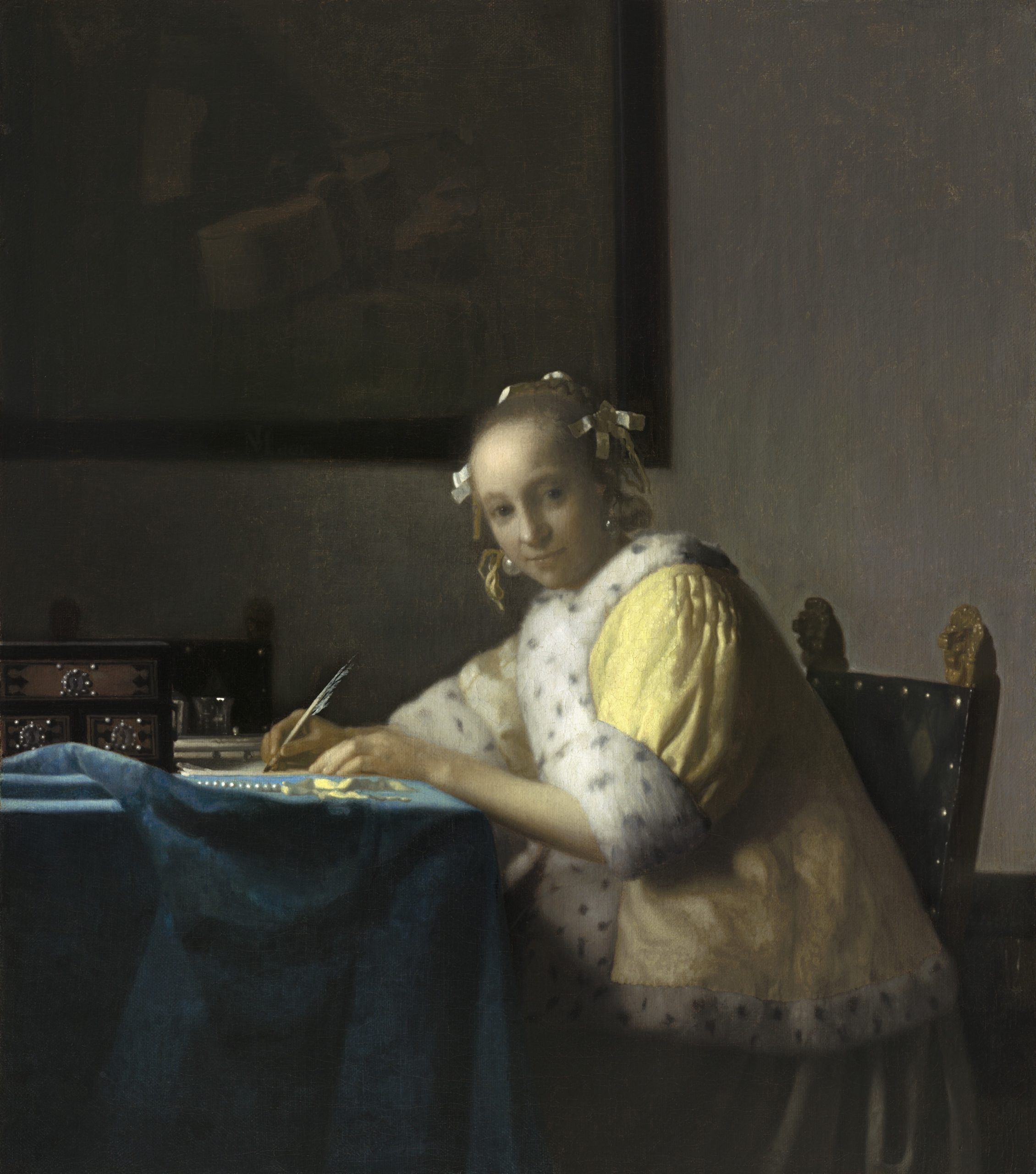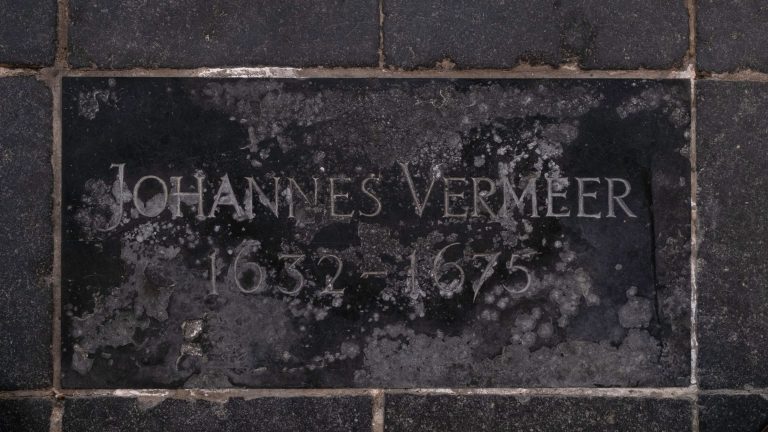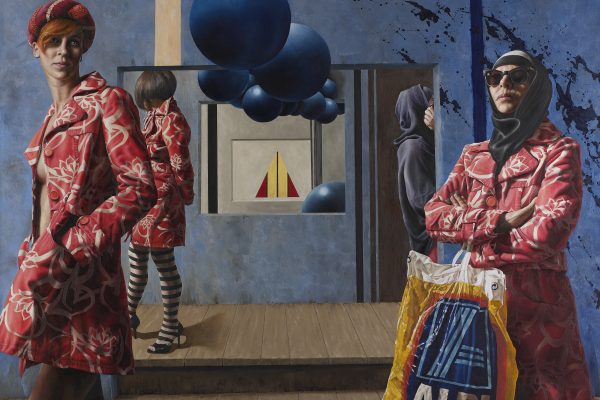Johannes Vermeer. I thought to myself: OK, this is a good time to write something about this painter, and in fact about his achievements. Only in such cases do I always have concerns about whether it makes sense when so much has already been tried to be said about it. His work, so fascinating, shrouded in a multitude of question marks, fired the imagination of many researchers.

Image Unsplash Tod Diemer
But surprisingly, this was not always the case, because this master of the art of painting very quickly fell into oblivion immediately after his death. It was not until the nineteenth century that a certain breakthrough and interest in his work brought about it. Not very abundant, because the painter’s over may include about 30 works, while a few others still raise disputes as to their attribution. Most often, Vermeer immortalized genre scenes taken from the life of the seventeenth-century Netherlands. And yet they still arouse vivid emotions, gathering around them a lot of enchanted supporters. So what is the Vermeer phenomenon? Have you ever wondered about that? Is it realism deeply rooted in the everyday life of ordinary people? Masterful use of light? Differentiating the textures of matter, building skillful compositions? Or a little bit of everything? Today I decided to look at his works and share my insights. So, we start with the most famous work that is…
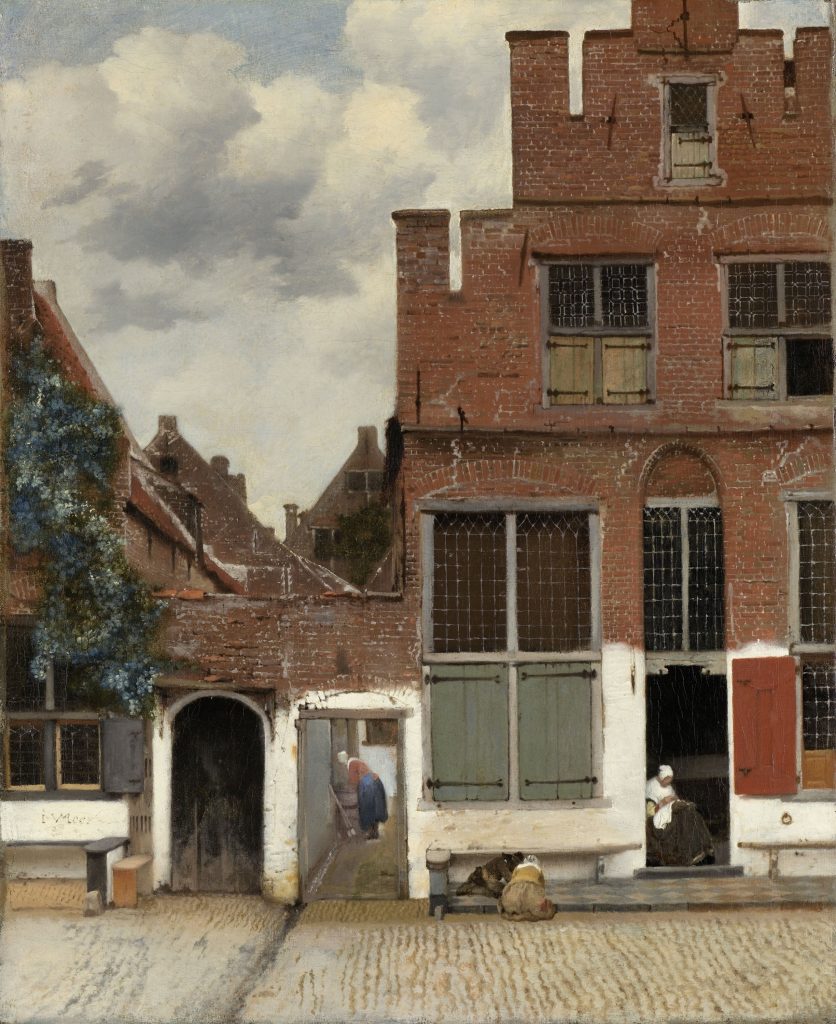
Image Shutterstock The Little Street by Johannes Vermeer
Girl with a pearl, c. 1665
The most famous work of this painter and certainly one of the most recognizable paintings ever created. After all, when saying “Girl with a pearl” many immediately recall his sight. How did Vermeer manage to capture the imagination of admirers around the world with this relatively modest portrait? What do you think? It is a fact that female character presented by him is beautiful. Subtle facial features, large eyes make her a classic beauty. On the other hand, many such beauties have been immortalized in paintings, and yet they do not match the fame of this charming Dutch woman. The portrait itself is also not some fancy show with the surrounding scenery, the image shown against the background of the landscape or in the interior with the detail of the elements taken into account. We are dealing with an image captured on a uniform, dark background. Devoid of any details. A woman’s outfit, too, if you look at it, it is relatively modest and simple. The brown outfit contrasts with the white of her collar and the turban shown in a contrasting combination of sunny colour with blue. And it seems that it is this simplicity that determines the unique character of this image. All attention is to be focused on the model full of subtle refinement and elegance. So chic looking as if she had just left the Channel fashion house and Cartier’s store with the highest quality jewellery. To put it even more briefly: it’s in a class of its own. And the painter managed to bring it out perfectly. It is fascinating that this moderation, this great restraint has gained such spectacular power of influence. Becoming, in a way, one of the greatest advantages of this work. This striking realism brings us madly closer to this character. Although about 350 years have passed, it still seems so close to us, alive, still present and so current regardless of this passage of time.

Image Shutterstock Girl with the pearl
“The spirit of the age affects all the arts; and the minds of men, being once roused from their lethargy, and put into a fermentation, turn themselves on all sides, and carry improvements into every art and science”. – David Hume, on the Scientific Revolution. The eye contact that he establishes with the viewer allows only this close connection, this relationship with it to be maintained and preserved. And the most certain thing about the context of this work is that we don’t really know anything about the model. Who was she? What is the story behind it? Although she looks at us as if she wants to reveal the truth about herself, this long-hidden secret, but she can no longer do it…
Milkmaid, ca. 1660
And then there’s another work with which Vermeer erected a “monument more durable than bronze.” But this time he did it with a genre scene referring to the activities of everyday life. And now we go again by analogy. Because theoretically, not much is happening here. The scene is not particularly elaborate, let alone saturated with rich and ambiguous symbolism. The heroine is a woman pouring milk from one dish to another. In a fairly modest interior in which we can only see some household accessories such as a basket, metal vessel or foot warmer. And paradoxically, most of it happens on the table, where there is bread and some pastries. So, in fact, not much is happening here. And yet the painting gained the rank of a masterpiece. How did Vermeer do this? In the first place, we can admire the high degree of realism that the artist has given his stage. The woman seems as if captured in an old photograph in a period costume. And this frame gives a sketch of a handsome figure with a ruddy face and a state of indisputable concentration painted on it. This concentration is crucial and admirable, because it shows that the work has a paramount value here and what counts is also a solid way of doing it. Thus, the objectivity and authenticity of the character seems to be all the greater because it seems as if in a moment it is about to finish its activity and move on to the next one. Bustling around the room and doing daily errands.
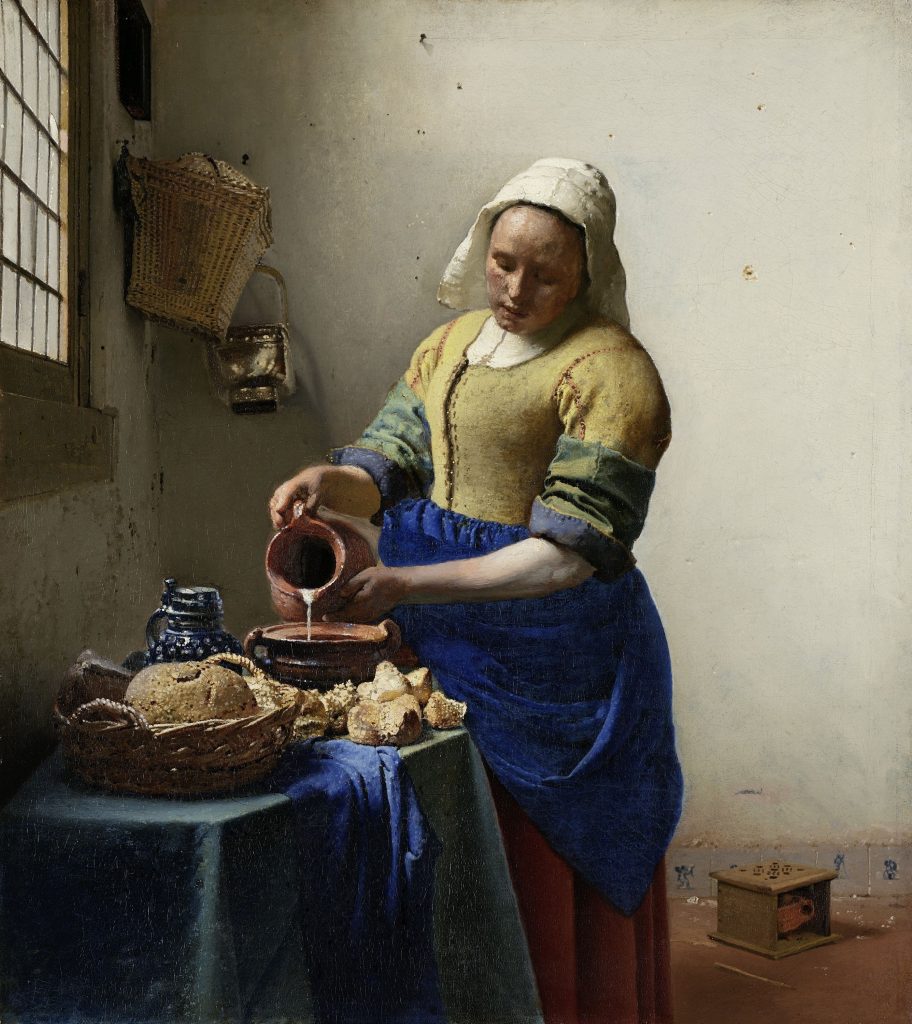
Image Shutterstock The Milkmaid
At the same time, the way in which the painter immortalized it is already a fully conscious expression of painterly craftsmanship. Attention is drawn primarily to the masterful differentiation of matter of all kinds. Starting from wicker, copper, clay objects to draperies of materials. And look at the heroine’s dress. Although it is shown in a work outfit, this outfit is neat, and certainly rendered in full detail. Enclosed in two colours with a large temperature gap and extracted with the help of intense bile and lapis lazuli. And although in this whole scene there is a significant reduction in the palette, with the right colour selection and the right method of applying stains, he managed to achieve fully realistic effects. The structure of things, or the imitation of their surface. This is Vermeer’s mastery, that from a simple scene he was able to squeeze the maximum of his skills and give high values to his own realization.
Written By Kamila Krzyzaniak
Images Shutterstock A Woman a Reading a Letter and Lady A Writing by Johannes Vermeer

